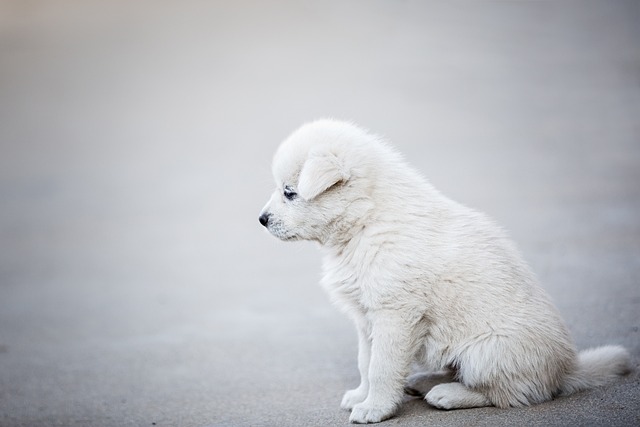
What food can be fed to a two month old Schnauzer
When you bring home a fluffy little ball - a two-month-old Schnauzer, its big wet eyes look at you as if silently asking, "Master, what should I eat?" At this moment,
When you open the door in the morning and see the uneven ground in the yard, the newly renovated lawn dug up and in a mess, and the garden landscape you were looking forward to turned into a "battlefield", dog owners will inevitably feel helpless and frustrated. But when you squat down and see the dog wagging its tail and coming over, with its wet eyes shining with innocence and excitement, you can't bear to scold it. The behavior of dogs digging holes may seem like "destruction", but in fact, it is the survival code written with their claws, carrying the instincts and emotional needs evolved over thousands of years. To truly solve this problem, what we need to do is not simply stop them, but understand the story behind these claw marks.
From a biological perspective, digging holes is a primitive survival skill of canines. In the wild, wolves and wild dogs dig holes to build nests to avoid predators, regulate their body temperature, or bury food to store energy. Even after being domesticated for thousands of years, modern pet dogs still retain this instinct. When a dog frantically digs holes on a hot afternoon, it may be looking for the cool soil underground to create a natural "air-conditioned room" for itself. When they bury toys or bones in the soil, they are actually following the habit of their ancestors of burying food, "depositing" precious items like in a bank. This behavior imprinted in their genes is as natural as humans secreting saliva when they see delicious food.
Emotional needs are also an important incentive for dogs to dig holes. A dog left alone at home may dig holes to relieve its loneliness due to separation anxiety, and the turned-up soil under its claws becomes an outlet for its emotions. Sporting dog breeds with excessive energy, such as Border Collies and Labradors, may regard digging holes as a game to release their physical strength. Sensitive dogs may use this way to seek a sense of security, just like a child hugging a comforting doll tightly. Behind these behaviors lies the dog's longing for the owner's attention and a silent protest against the monotony of life.
 To resolve the "conflict" between the dog and the garden, it is first necessary to establish a scientific behavior guidance system. Instead of forcefully stopping them, it is better to create a reasonable release space for them. Designate a special "digging area" in the corner of the yard, lay soft sand, and place some old toys and bones, making this a exclusive "playground" for the dog. Every time you find them active in the correct area, give them snacks as rewards and enthusiastic praise in a timely manner. Through positive reinforcement, let the dog understand that "it can play to its heart's content here". Just like teaching a child to distinguish between a play area and a study area, patient guidance is far more effective than scolding.
To resolve the "conflict" between the dog and the garden, it is first necessary to establish a scientific behavior guidance system. Instead of forcefully stopping them, it is better to create a reasonable release space for them. Designate a special "digging area" in the corner of the yard, lay soft sand, and place some old toys and bones, making this a exclusive "playground" for the dog. Every time you find them active in the correct area, give them snacks as rewards and enthusiastic praise in a timely manner. Through positive reinforcement, let the dog understand that "it can play to its heart's content here". Just like teaching a child to distinguish between a play area and a study area, patient guidance is far more effective than scolding.
Exercise and mental stimulation are the keys to reducing destructive behavior. Ensure enough outdoor activity time every day and design exercise plans according to the characteristics of the dog breed: Border Collies can undergo agility training, Golden Retrievers are suitable for playing with a frisbee, and small dogs can try sniffing walks. In addition, the reasonable use of puzzle toys can effectively consume the dog's energy. Food-dispensing balls and treat-dispensing toys can make the dog feel a sense of accomplishment during the puzzle-solving process, similar to the satisfaction humans feel when completing a jigsaw puzzle. When the dog's body and mind are fully satisfied, it will naturally not vent its excessive energy by digging holes.
Environmental management should not be ignored either. For dogs that dig holes due to temperature discomfort, you can add a sunshade in the yard, place sufficient drinking water facilities, and turn on the outdoor spray cooling system when necessary. To prevent dogs from digging in specific areas, you can lay grids, stones, or plant plants with a strong smell in those areas, using physical barriers and odor interference to reduce destruction. However, all these measures should be implemented on the premise of not harming the dog. Any punitive measures, such as sprinkling irritating drugs or tying up the dog to restrict it, will deepen its anxiety and instead exacerbate the destructive behavior.
The root cause of behavioral problems often points to the lack of emotional communication. When we complain that the dog is disobedient, we might as well reflect on whether we truly understand its needs. A dog that is left alone at home for 8 hours a day is like a child locked in an empty room. How can it not try to attract attention by "messing around"? Regular interactive games, stroking, hugging, and soft conversations, these seemingly simple actions are all bridges to build trust. Just like a heart-to-heart conversation between friends, when the dog feels loved and valued, it will take the initiative to adjust its behavior to meet the owner's expectations.
Solving the problem of dogs digging holes is essentially an emotional dialogue across species. We need to use scientific methods to resolve conflicts, accept their nature with an inclusive attitude, and fill the emotional gap with continuous love. When we squat down and observe the dog's world from an equal perspective, we will find that every claw mark is a "love letter" they write to humans. Perhaps one morning, we will still see small holes in the yard, but the difference is that there will be a dog wagging its tail and waiting for praise beside the holes, and we will be able to smile and touch its head, understanding this unique "canine romance".

When you bring home a fluffy little ball - a two-month-old Schnauzer, its big wet eyes look at you as if silently asking, "Master, what should I eat?" At this moment,

When you see your usually lively dog suddenly limp while running, being cautious when going up and down the stairs, and even having difficulty getting up,

When a doggy door is installed at home to facilitate the dog's free entry and exit,and the owner is looking forward to the dog being able to move freely like other dogs,

As the most loyal companions of humans, dogs accompany us through countless warm times. Understanding the colors that are difficult to distinguish in their vision is not only an exploration of scientific knowledge,

In the morning sunlight, other people's dogs have smooth and shiny fur, shining like silk. However, your own precious dog's fur is dull, dry, and rough,

In the late night, in the silent room, you, who were originally sleeping quietly, are suddenly awakened by a "rustling" scratching sound.